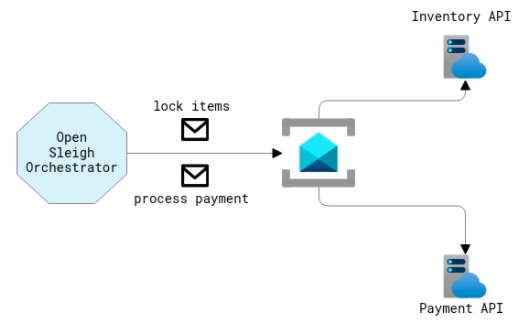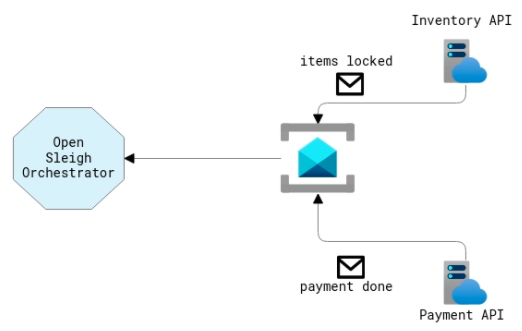
How to use Sagas to process orders - part 1
Hi All! Today I would like to digress a bit about how it’s possible to use a Saga to orchestrate a very simple Order Processing workflow. We’re going to use OpenSleigh, of course, to do all the gruntwork for us.
It’s been a while since my last post. I’ve been dragged a bit, by life and my work on OpenSleigh. I have also been quite busy preparing for a bunch of talks I’m about to give in April.
We talked already about what Orchestration is and how it differs from Choreography in another post, so I’m not going to spend much time on this.
So, in a regular, microservice-based e-commerce, we usually have multiple services involved in the Order processing workflow. When the customer clicks “Buy” and finalizes her order, there’s a whole list of steps our system has to do.
We might have, for example:
- Inventory service, called to make sure we have products in stock
- Payment service, called to finalize the payment form the customer
- Shipping service, called to send the items to the customer
This is, of course, an oversimplification of what could happen. There are many other steps involved, just think of Localization, Coupons, Credit check, Customer loyalty and so on.
Organizing this workflow, or multiple workflows like this can be quite overwhelming. OpenSleigh can be leveraged as central node, turning our architecture into an event-based, asynchronous, reactive system.

We can use a Saga to handle a Process Order command from the main user-facing application. OpenSleigh will start a new Saga instance and initiate the process.

The message handler can send multiple commands to the underlying microservices, for example, to check the inventory and to process the payment.

Each individual microservice will publish an event once its work is complete. The Saga can subscribe to those events, and wait for all of them before triggering the last step.

That’s all for today! The next time we’ll go a bit more into the details and take a look at some sample code.
Ciao!
Did you like this post? Then




